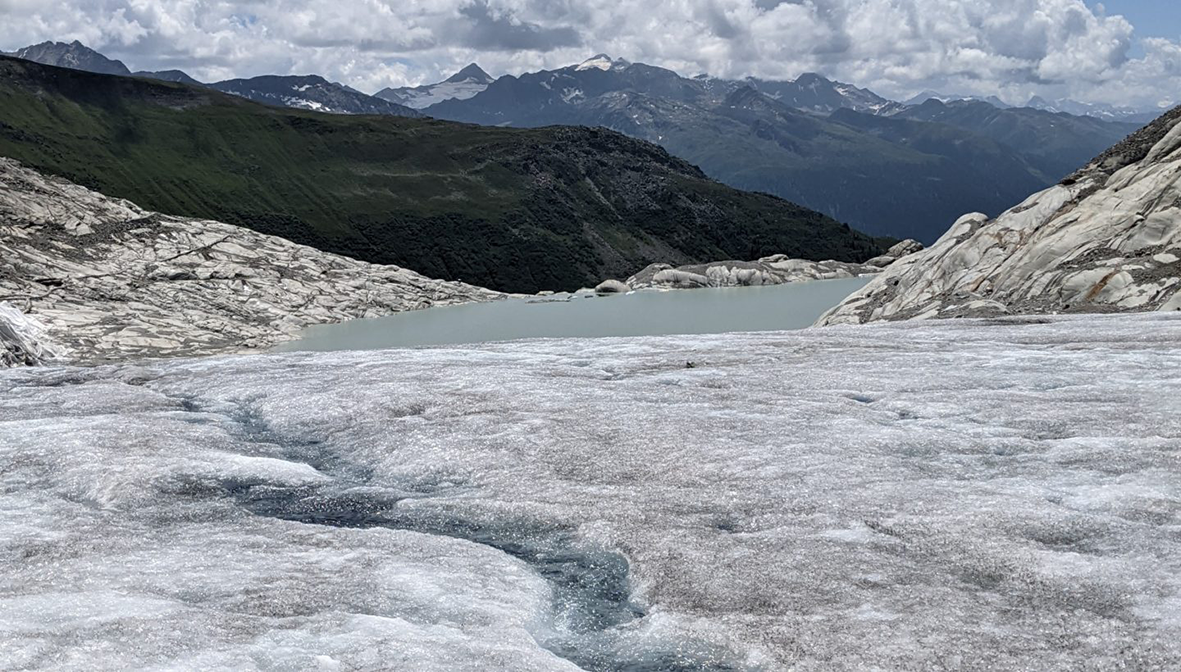Our planet is shaped by a multitude of physical, chemical and biological processes. Most of these processes and their effect on the ground’s properties can be sensed by seismic instruments – as discrete events or ongoing signatures. Seismic methods have been developed, adopted and advanced to study those dynamics at or near the surface of the Earth, with unprecedented detail, completeness and resolution. The community of geophysicists interested in earth surface dynamics and geomorphologists, glaciologists, hydrologists, volcanologists, geochemists, biologists and engineering geologists interested in using arising geophysical tools and techniques is progressively growing and collaboratively advancing the emerging scientific discipline Environmental Seismology.
 Rhonegletscher (Switzerland) – A multitude of physical processes (e.g., melt water flow, crevassing, wind, basal sliding, rock falls) can be sensed by seismic instruments and analyzed with Machine Learning leading to groundbreaking insights into the glacier’s dynamics (Photo taken by J. Umlauft, 2022).
Rhonegletscher (Switzerland) – A multitude of physical processes (e.g., melt water flow, crevassing, wind, basal sliding, rock falls) can be sensed by seismic instruments and analyzed with Machine Learning leading to groundbreaking insights into the glacier’s dynamics (Photo taken by J. Umlauft, 2022).We here foster methodological developments for an improved understanding of near-surface environmental processes on the exploration scale. Our focus lies on natural hazards and mass movements, especially in the cryosphere and mountainous regions. Based on highly resolved time series data, we combine signal processing, source location (array techniques), modelling and machine learning to conduct our research.
Projects & Sites: